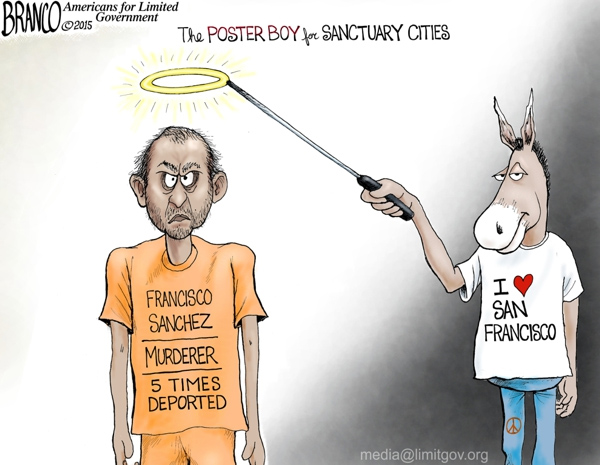Kate Steinle, a 32-year-old San Franciscan woman, was murdered by an undocumented immigrant living in the city illegally in July of 2015. Now her family blames more than just her murderer Juan Francisco Lopez-Sanchez; Kate’s family has decided to sue the city for being a “sanctuary city”.
The lawsuit writes “Kate’s death was both foreseeable and preventable had the law enforcement agencies, officials and/or officers involved simply followed the laws, regulations and/or procedures which they swore to uphold.”
By definition, these sanctuary cities are known to defy the law in order to provide a safe haven for illegal immigrants living in the United States. However, this also provides no protection in situations like Kate’s, where Juan had been a repeat felony offender and deported 5 times after illegal activity aside from his residence.
 These safety cities for illegal immigrants have now taken center stage on the immigration debate. The issue was brought to the Senate floor by Pennsylvania Republican Pat Toomey in July to strip funding from sanctuary cities, however; Democrats united to protect the cities claiming the legislation does not provide a “real solution to our broken immigration system.”
These safety cities for illegal immigrants have now taken center stage on the immigration debate. The issue was brought to the Senate floor by Pennsylvania Republican Pat Toomey in July to strip funding from sanctuary cities, however; Democrats united to protect the cities claiming the legislation does not provide a “real solution to our broken immigration system.”
Later, Donald Trump made it one of the pillars of his immigration agenda on the campaign trail. At a Phoenix, Arizona rally on August 31, 2016, Trump discussed the importance of working with Congress to prevent taxpayer money from funding institutions which are not following through on their simple promises to citizens-to enforce the law.
Trump noted “Cities that refuse to cooperate with federal authorities will not receive taxpayer dollars, and we will work with Congress to pass legislation to protect those jurisdictions that do assist federal authorities… Block funding for sanctuary cities… We will end the sanctuary cities that have resulted in so many needless deaths.”
Sanctuary cities are committing far more than an act against federal law. According to the Washington Post of July 2016, from 2004 to 2012 sanctuary cities generated agreements between local and federal law enforcement to keep illegal immigrants in U.S. prisons after completing time served for crimes in order to provide shelter and resources to stall deportation and provide an opportunity to fight immigration court. Often passing the “prisoners” from prison to prison without providing family notice or legal counsel, only to eventually release the illegal immigrant back into society.
However, this plan has been criticized as an obvious violation of international human rights accords and simply a method to keep and rerelease illegal immigrants. Without consequence for a lack of adherence to federal law, cities were able to commit any number of legal violations they desired.
Federal immigration law becomes absolutely purposeless without state and local adherence to the policies. Even in situations where cities tried to imprison illegal immigrants without warrant to protect against deportation, human rights violations ran rampant. Sanctuary cities must be discovered and punished for their lack of accountability. If they are not any possibility of immigration reform will be a lost cause.
Natalia Castro is a contributing editor at Americans for Limited Government.





